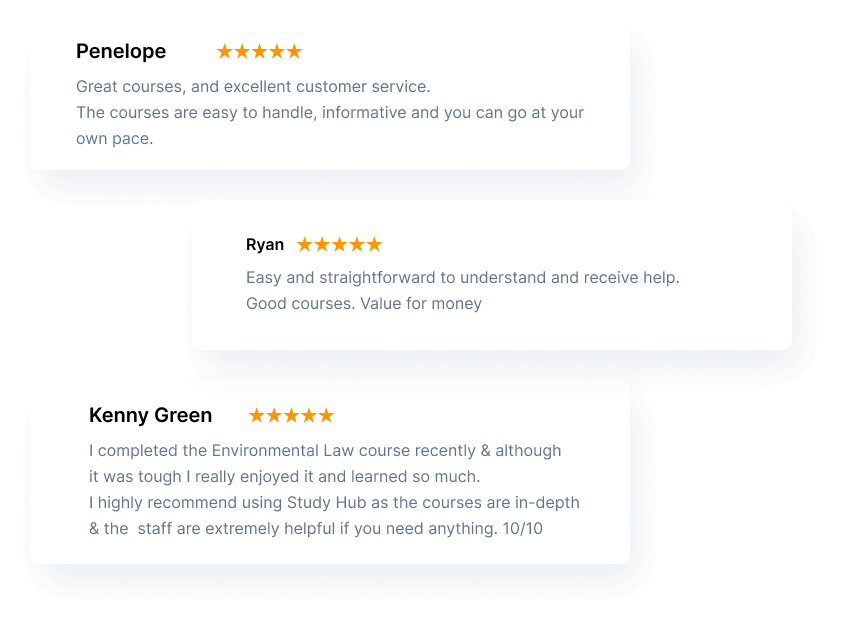
- Home
- Course
- IT & Software
- Python for Machine Learning: The Complete Beginner's Course
Python for Machine Learning: The Complete Beginner's Course
-
 Level: Intermediate
Level: Intermediate
-
 Modules: 84 Modules
Modules: 84 Modules -
 Duration: 2 hours, 29 minutes
Duration: 2 hours, 29 minutes -
 Students: 2
Students: 2
Unlock the doors to the future of technology with Python for Machine Learning: The Complete Beginner’s Course. This comprehensive course is designed to take you from a novice to a proficient coder, ready to tackle the exciting world of machine learning. Starting with an introduction to machine learning concepts, this course gradually guides you through the essentials of setting up Python and implementing various ML algorithms. Dive deep into the fascinating realms of linear regression, classification algorithms, and clustering, all while mastering the techniques of a recommender system. Python for Machine Learning: The Complete Beginner’s Course is meticulously crafted to provide you with a robust theoretical foundation, making complex topics accessible and engaging. Whether you’re looking to pivot into a new career or simply expand your knowledge, Python for Machine Learning: The Complete Beginner’s Course will equip you with the necessary skills to excel in this rapidly evolving field.
Learning Outcomes
- Understand the fundamentals of machine learning.
- Set up Python environment for machine learning tasks.
- Implement simple and multiple linear regression models.
- Explore various classification algorithms.
- Learn about clustering techniques.
- Gain insights into building recommender systems.
Why buy this Python for Machine Learning: The Complete Beginner’s Course?
- Unlimited access to the course for forever
- Digital Certificate, Transcript, student ID all included in the price
- Absolutely no hidden fees
- Directly receive CPD accredited qualifications after course completion
- Receive one to one assistance on every weekday from professionals
- Immediately receive the PDF certificate after passing
- Receive the original copies of your certificate and transcript on the next working day
- Easily learn the skills and knowledge from the comfort of your home
Certification
After studying the course materials of the Python for Machine Learning: The Complete Beginner’s Course there will be a written assignment test which you can take either during or at the end of the course. After successfully passing the test you will be able to claim the pdf certificate for £4.99. Original Hard Copy certificates need to be ordered at an additional cost of £8.
Who is this Python for Machine Learning: The Complete Beginner’s Course for?
- Beginners with no prior machine learning experience.
- Python programmers looking to expand their knowledge into machine learning.
- Data enthusiasts eager to understand theoretical aspects of machine learning.
- Students and professionals interested in the foundations of machine learning algorithms.
- Individuals aiming to enhance their analytical and technical skills.
- Lifelong learners passionate about entering the field of machine learning.
Prerequisites
This Python for Machine Learning: The Complete Beginner’s Course does not require you to have any prior qualifications or experience. You can just enrol and start learning. This Python for Machine Learning: The Complete Beginner’s Course was made by professionals, and it is compatible with all PC’s, Mac’s, tablets and smartphones. You will be able to access the course from anywhere at any time as long as you have a good enough internet connection.
Career path
- Data Scientist: £45,000 to £65,000 per year
- Machine Learning Engineer: £50,000 to £70,000 per year
- AI Research Scientist: £50,000 to £80,000 per year
- Data Analyst: £30,000 to £45,000 per year
- Software Developer (with a focus on ML): £35,000 to £55,000 per year
- Business Intelligence Developer: £40,000 to £60,000 per year
Course Curriculum
| Section 01: Introduction to Machine Learning | |||
| What is Machine Learning? | 00:02:00 | ||
| Applications of Machine Learning | 00:02:00 | ||
| Machine learning Methods | 00:01:00 | ||
| What is Supervised learning? | 00:01:00 | ||
| What is Unsupervised learning? | 00:01:00 | ||
| Supervised learning vs Unsupervised learning | 00:04:00 | ||
| Section 02: Setting Up Python & ML Algorithms Implementation | |||
| Introduction S2 | 00:01:00 | ||
| Python Libraries for Machine Learning | 00:02:00 | ||
| Setting up Python | 00:02:00 | ||
| What is Jupyter? | 00:02:00 | ||
| Anaconda Installation Windows Mac and Ubuntu | 00:04:00 | ||
| Implementing Python in Jupyter | 00:01:00 | ||
| Managing Directories in Jupyter Notebook5 | 00:03:00 | ||
| Section 03: Simple Linear Regression | |||
| Introduction to regression | 00:02:00 | ||
| How Does Linear Regression Work? | 00:02:00 | ||
| Line representation | 00:01:00 | ||
| Implementation in Python: Importing libraries & datasets | 00:02:00 | ||
| Implementation in Python: Distribution of the data | 00:02:00 | ||
| Implementation in Python: Creating a linear regression object | 00:03:00 | ||
| Section 04: Multiple Linear Regression | |||
| Understanding Multiple linear regression | 00:02:00 | ||
| Implementation in Python: Exploring the dataset | 00:04:00 | ||
| Implementation in Python: Encoding Categorical Data | 00:05:00 | ||
| Implementation in Python: Splitting data into Train and Test Sets | 00:02:00 | ||
| Implementation in Python: Training the model on the Training set | 00:01:00 | ||
| Implementation in Python: Predicting the Test Set results | 00:03:00 | ||
| Evaluating the performance of the regression model | 00:01:00 | ||
| Root Mean Squared Error in Python | 00:03:00 | ||
| Section 05: Classification Algorithms: K-Nearest Neighbors | |||
| Introduction to classification | 00:01:00 | ||
| K-Nearest Neighbors algorithm | 00:01:00 | ||
| Example of KNN | 00:01:00 | ||
| K-Nearest Neighbours (KNN) using python | 00:01:00 | ||
| Implementation in Python: Importing required libraries | 00:01:00 | ||
| Implementation in Python: Importing the dataset | 00:02:00 | ||
| Implementation in Python: Splitting data into Train and Test Sets | 00:03:00 | ||
| Implementation in Python: Feature Scaling | 00:01:00 | ||
| Implementation in Python: Importing the KNN classifier | 00:02:00 | ||
| Implementation in Python: Results prediction & Confusion matrix | 00:02:00 | ||
| Section 06: Classification Algorithms: Decision Tree | |||
| Introduction to decision trees | 00:01:00 | ||
| What is Entropy? | 00:01:00 | ||
| Exploring the dataset | 00:01:00 | ||
| Decision tree structure | 00:01:00 | ||
| Implementation in Python: Importing libraries & datasets | 00:01:00 | ||
| Implementation in Python: Encoding Categorical Data | 00:03:00 | ||
| Implementation in Python: Splitting data into Train and Test Sets | 00:01:00 | ||
| Implementation in Python: Results Prediction & Accuracy | 00:03:00 | ||
| Section 07: Classification Algorithms: Logistic regression | |||
| Introduction S7 | 00:01:00 | ||
| Implementation steps | 00:01:00 | ||
| Implementation in Python: Importing libraries & datasets | 00:02:00 | ||
| Implementation in Python: Splitting data into Train and Test Sets | 00:01:00 | ||
| Implementation in Python: Pre-processing | 00:02:00 | ||
| Implementation in Python: Training the model | 00:01:00 | ||
| Implementation in Python: Results prediction & Confusion matrix | 00:02:00 | ||
| Logistic Regression vs Linear Regression | 00:02:00 | ||
| Section 08: Clustering | |||
| Introduction to clustering | 00:01:00 | ||
| Use cases | 00:01:00 | ||
| K-Means Clustering Algorithm | 00:01:00 | ||
| Elbow method | 00:02:00 | ||
| Steps of the Elbow method | 00:01:00 | ||
| Implementation in python | 00:04:00 | ||
| Hierarchical clustering | 00:01:00 | ||
| Density-based clustering | 00:02:00 | ||
| Implementation of k-means clustering in Python | 00:01:00 | ||
| Importing the dataset | 00:03:00 | ||
| Visualizing the dataset | 00:02:00 | ||
| Defining the classifier | 00:02:00 | ||
| 3D Visualization of the clusters | 00:03:00 | ||
| Number of predicted clusters | 00:02:00 | ||
| Section 09: Recommender System | |||
| Introduction S9 | 00:01:00 | ||
| Content-based Recommender System | 00:01:00 | ||
| Implementation in Python: Importing libraries & datasets | 00:03:00 | ||
| Merging datasets into one dataframe | 00:01:00 | ||
| Sorting by title and rating | 00:04:00 | ||
| Histogram showing number of ratings | 00:01:00 | ||
| Frequency distribution | 00:01:00 | ||
| Jointplot of the ratings and number of ratings | 00:01:00 | ||
| Data pre-processing | 00:02:00 | ||
| Sorting the most-rated movies | 00:01:00 | ||
| Grabbing the ratings for two movies | 00:01:00 | ||
| Correlation between the most-rated movies | 00:02:00 | ||
| Sorting the data by correlation | 00:01:00 | ||
| Filtering out movies | 00:01:00 | ||
| Sorting values | 00:01:00 | ||
| Repeating the process for another movie | 00:02:00 | ||
| Section 10: Conclusion | |||
| Conclusion | 00:01:00 | ||


Related Courses
Step into the world of seamless content creation with The OBS Course for Recording, your gateway to professional-quality video production. …
0
Delve deeper into the powerful world of Java with Java Mastery Intermediate: Methods, Collections, and Beyond. This course is designed …
0
Take your Java programming skills to new heights with Mastering Advanced Java with Object-Oriented Programming. This course delves deep into …
0





